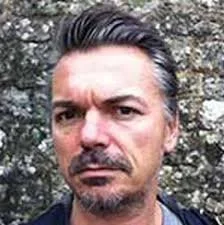About us
Cilia-AI combines the expertise of 9 academic, 2 industrial, and 2 non-profit sector partners that are all motivated to train a new, pan-European cohort of DCs to become the next generation of independent cilia researchers.
The Cilia-AI consortium is dedicated to linking genotype-to-phenotype relationships in the ciliopathies, by:
🔬 Unravel variant-function relationships in cilia biology.
🔬 Enhance molecular and cellular profiling of ciliopathy disease states.
🔬 Leverage machine learning technology to advance imaging and analysis at multiple scales.
Understanding how cilia work, both in health and in disease, requires a blend of expertise from many different fields. We use next-generation technologies like:
AI-assisted structural biology to understand the detailed structures of cilia.
Quantitative proteomics to analyze the proteins involved.
Whole exome and long-range whole genome sequencing to investigate genetic factors.
Single cell- and single nucleus, and spatial transcriptomics to study gene expression at the single-cell level.
Super-resolution microscopy and cryo-electron tomography, combined with expansion microscopy, to obtain highly detailed imaging data.
All these techniques generate large amounts of data, and integrating this information to gain meaningful insights is challenging. This is where machine learning, a key area of artificial intelligence, comes into play. Machine learning helps us process and analyze these complex datasets, integrating data from different disciplines, and extracting valuable insights for biomedical research.
Research Focus Areas & PhD Positions:
Ciliary Molecular and Structural Function (WP1)
Investigate how cilium function is determined by the structure, organisation and molecular variation.
📌 4 PhD positions DC5, DC6, DC10, DC13
Ciliary Biogenesis and Homeostasis (WP2)
Examine cell- and organelle-specific processes critical for cilia formation and maintenance.
📌 5 PhD positions DC4, DC7, DC8, DC11, DC12
Cilium in Organ Development and Physiology (WP3)
Decipher the cilium’s essential role in regulation of organ development and physiology.
📌 5 PhD positions DC1, DC2, DC3, DC9, ADC
All three WPs will be linked by a shared relevance to defects in disease, the ciliopathies.
Radboudumc Nijmegen, The Netherlands
Ronald Roepman, DC1Søren Christensen, DC3Martijn Huijnen, DC2Lotte Pedersen, DC4Marijn Stokman, DC13University of Copenhagen, Denmark
Aarhus University, Denmark
Esben Lorentzen, DC5University of Heidelberg, Germany
Rob Russell, DC6Anna Akhmanova, DC11University of Edinburgh, United Kingdom
Pleasantine Mill, ADCUtrecht University, The Netherlands
University of Tübingen, Germany
Karsten Boldt, DC9Human Technopole Milan, Italy
Gaia Pigino, DC7Institut Imagine Paris, France
Alexandre Benmerah, DC8Florian Jug, DC12Sophie Saunier, DC10














